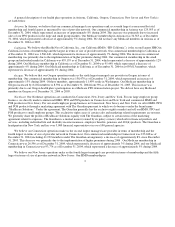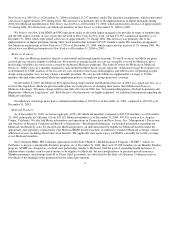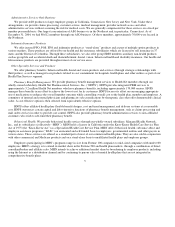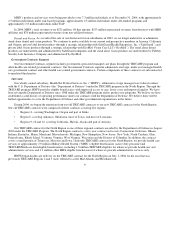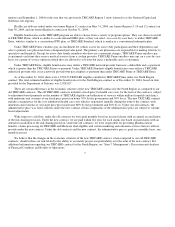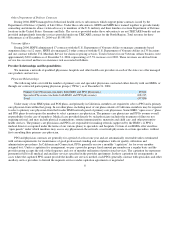Health Net 2004 Annual Report Download - page 16
Download and view the complete annual report
Please find page 16 of the 2004 Health Net annual report below. You can navigate through the pages in the report by either clicking on the pages listed below, or by using the keyword search tool below to find specific information within the annual report.
Government Regulation
Our business is subject to comprehensive federal regulation and state regulation in the jurisdictions in which we do business.
These laws and regulations govern how we conduct our businesses and result in additional requirements, restrictions and costs to us.
We believe we are in compliance in all material respects with all current state and federal laws and regulations applicable to our
business. Certain of these laws and regulations are discussed below.
Federal Legislation and Regulation
Medicare Legislation. On December 8, 2003, the Medicare Prescription Drug, Improvement and Modernization Act of 2003 (the
“MMA”) was signed into law. This complex legislation made many significant structural changes to the federal Medicare program.
Of special interest to us and other companies with Medicare contracts is that funding has been increased to the Medicare Advantage
program in 2004 and 2005. In addition, Health Savings Accounts were allowed as part of the MMA for non-Medicare eligible
individuals and groups. The MMA also added a voluntary prescription drug benefit, called a “Part D” benefit, that will be available to
Medicare beneficiaries starting January 1, 2006. Medicare Advantage plans will be required to offer the voluntary prescription drug
benefit in at least one of their product options. The MMA also authorized a Medicare-endorsed prescription drug card program that is
offered on a voluntary basis and provides Medicare beneficiaries access to prescription drug discounts. We participate in the
prescription drug discount card program and began offering the card to our members in June 2004. These drug cards will cease being
available when the voluntary prescription drug benefit program is implemented in January 2006.
The MMA changes the methodology for payment to private plans beginning in 2006, when a form of competitive bidding
begins. The first bids are due in June 2005. For the Medicare Advantage plans, the bidding process compares each plan’s bid, which
is based on historical health care costs, to a benchmark cost figure developed by CMS. The projected savings from the benchmark
rate will be used 75% to fund additional benefits. The remaining 25% will be retained by CMS. The MMA also authorized regional
PPOs to serve 26 regions, and other features with the intent to provide a private market option on a broader scale across the United
States.
Many significant parts of the MMA were addressed through the regulatory process. The CMS issued final regulations to
implement the MMA in January 2005. We are engaged in intensive evaluation of this legislation and the related regulations and
intend to pursue opportunities either enhanced or created by the law. We have also restructured our Medicare program management
team in an effort to build infrastructure to capitalize on opportunities presented by the MMA. The restructured Medicare program
management team has been designed to increase our capability for effective execution on growth and cost management initiatives in
response to opportunities presented by the MMA and the Medicare program generally.
Privacy Regulations. The use of individually identifiable data by our businesses is regulated at the federal, state and local level.
These laws and regulations are changed frequently by legislation or administrative interpretation. Various state laws address the use
and maintenance of individually identifiable health data. Most are derived from Health Insurance Portability and Accountability Act
of 1996 (“HIPAA”) and the privacy provisions in the federal Gramm-Leach-Bliley Financial Modernization Act of 1999 (the
“Gramm-Leach-Bliley Act”).
HIPAA and the implementing regulations that have been adopted in connection therewith impose obligations for issuers of
health insurance coverage and health benefit plan sponsors relating to the privacy and security of electronically transmitted protected
health information (“PHI”). The regulations, consisting of privacy regulations, transactions and codeset requirements and security
regulations require health plans, clearinghouses and providers to:
•
comply with various requirements and restrictions related to the use, storage and disclosure of PHI,
13
•
adopt rigorous internal procedures to protect PHI,


